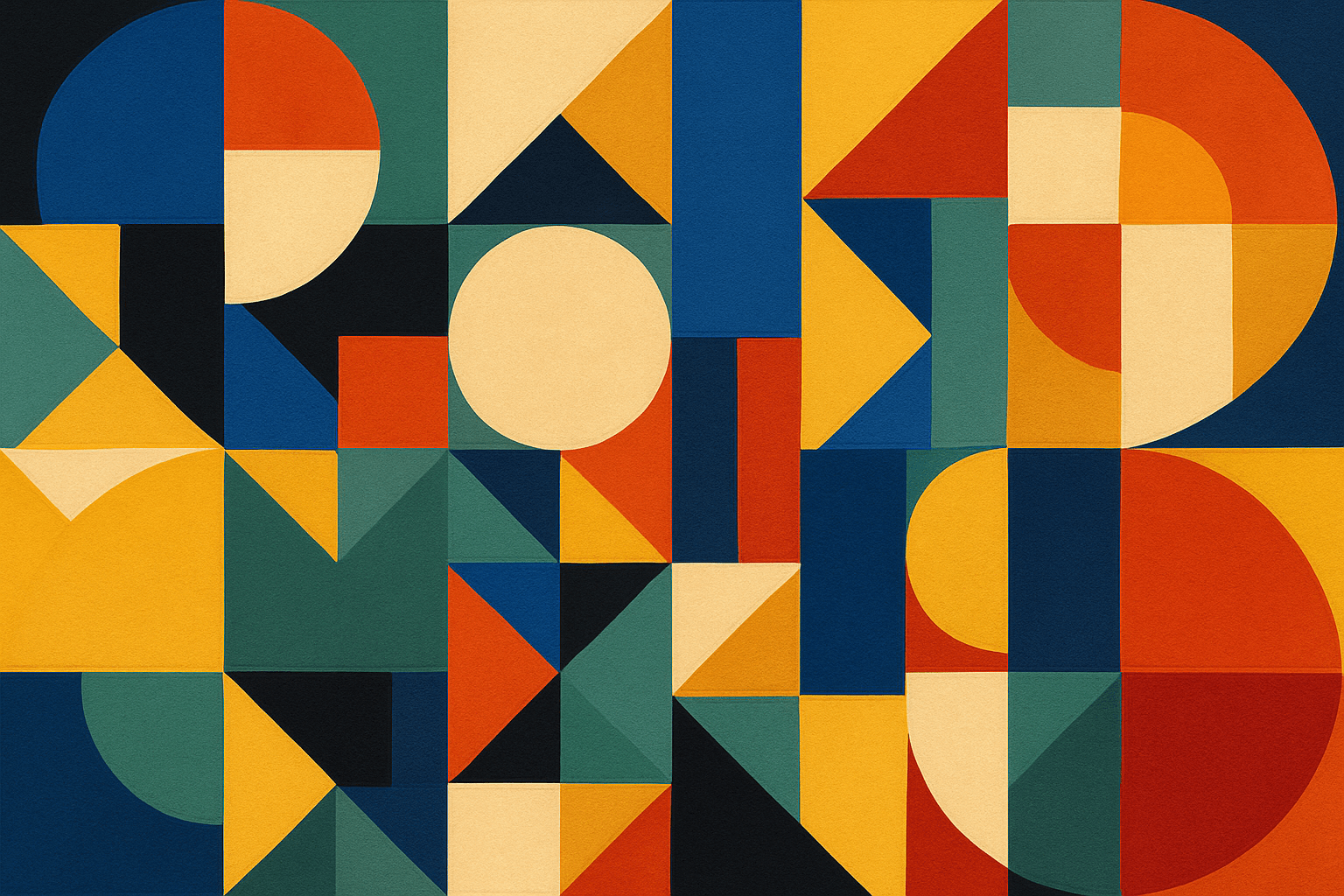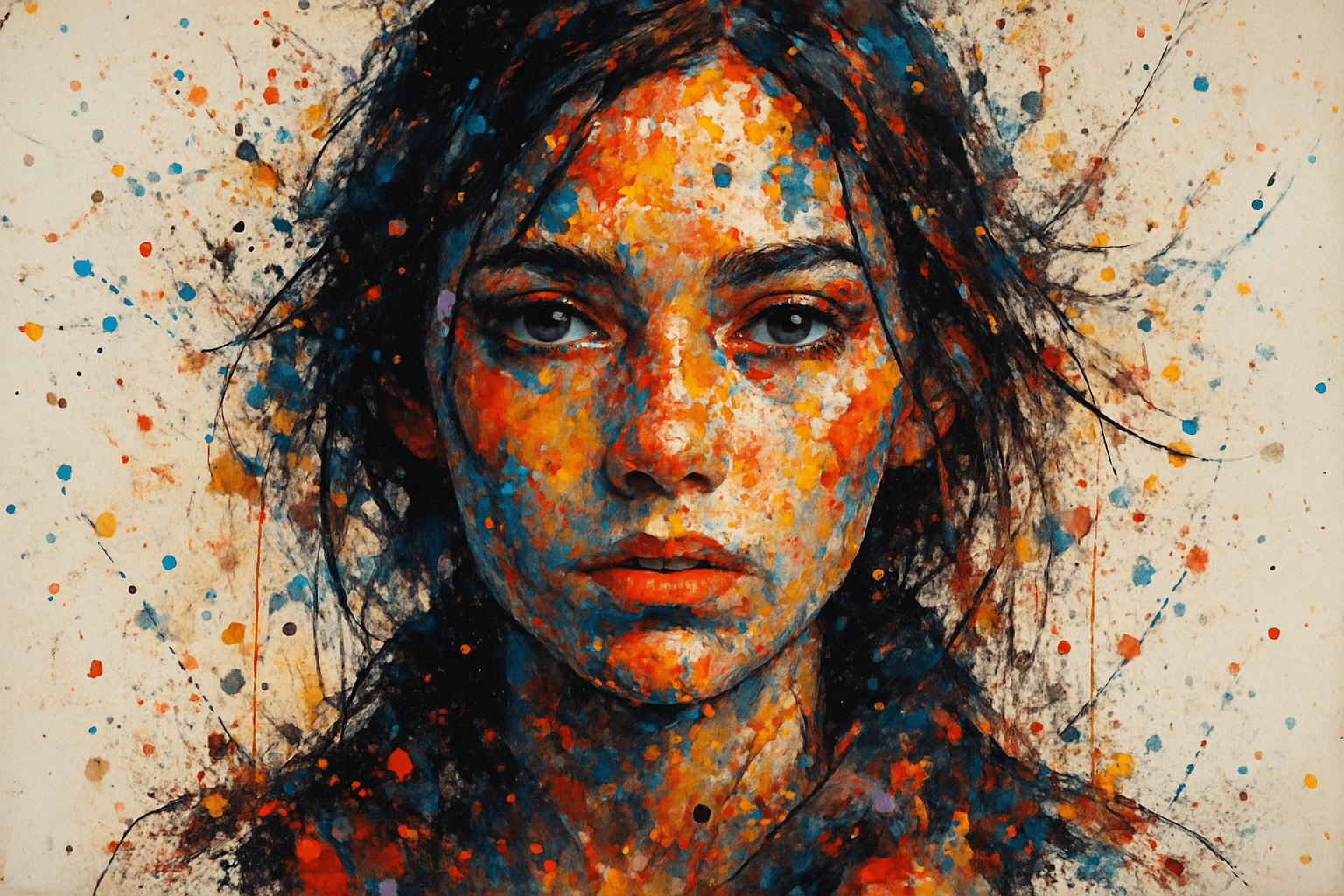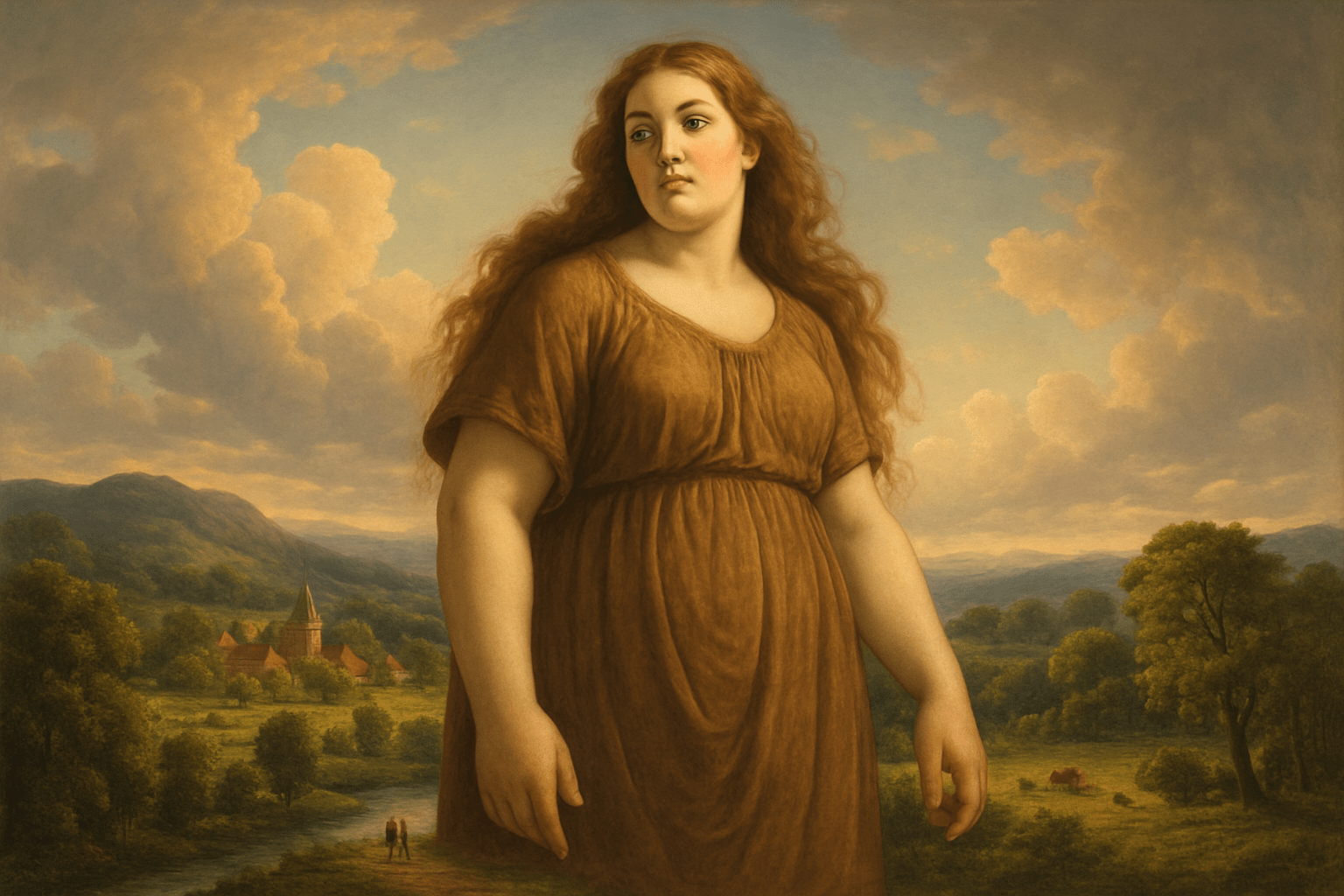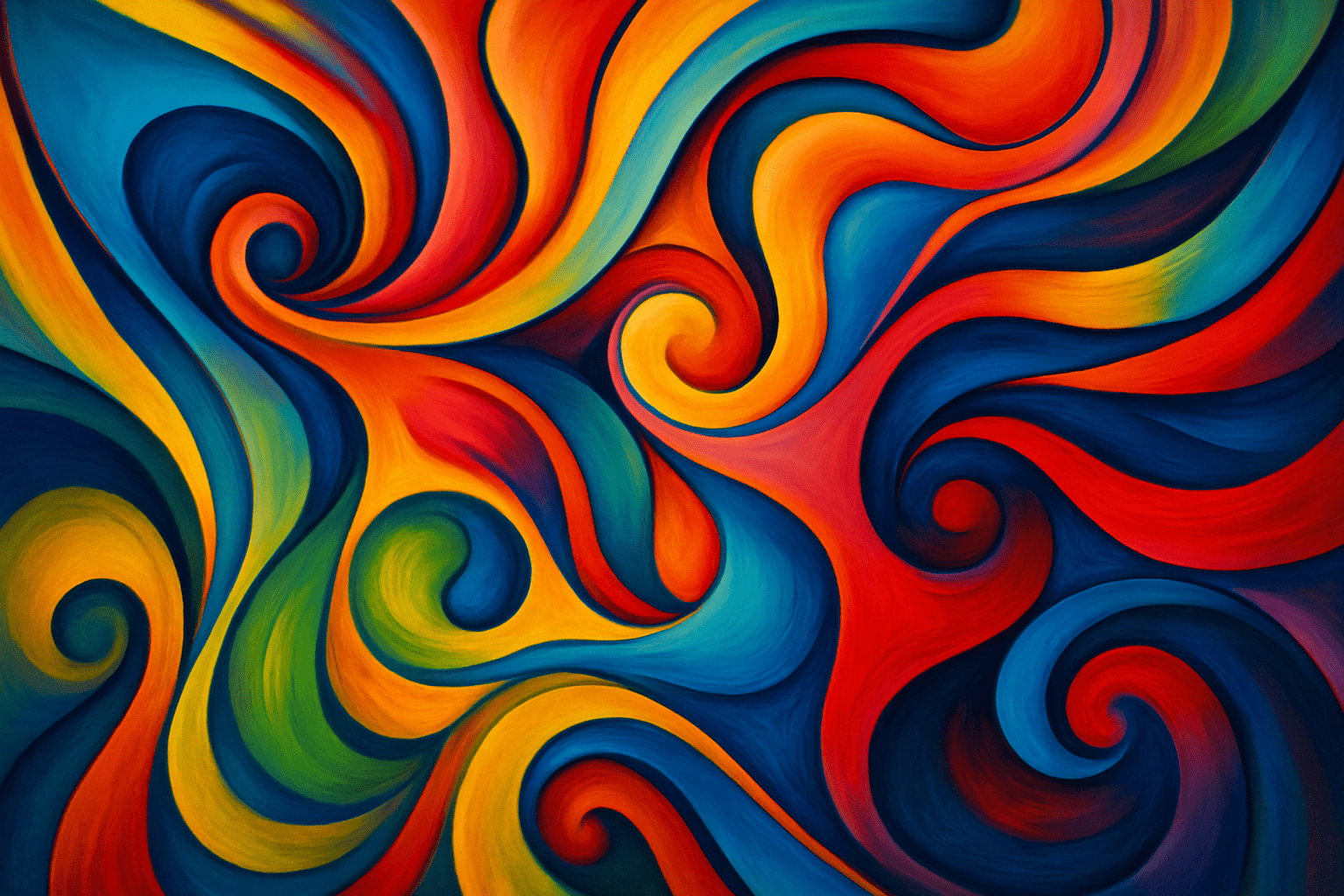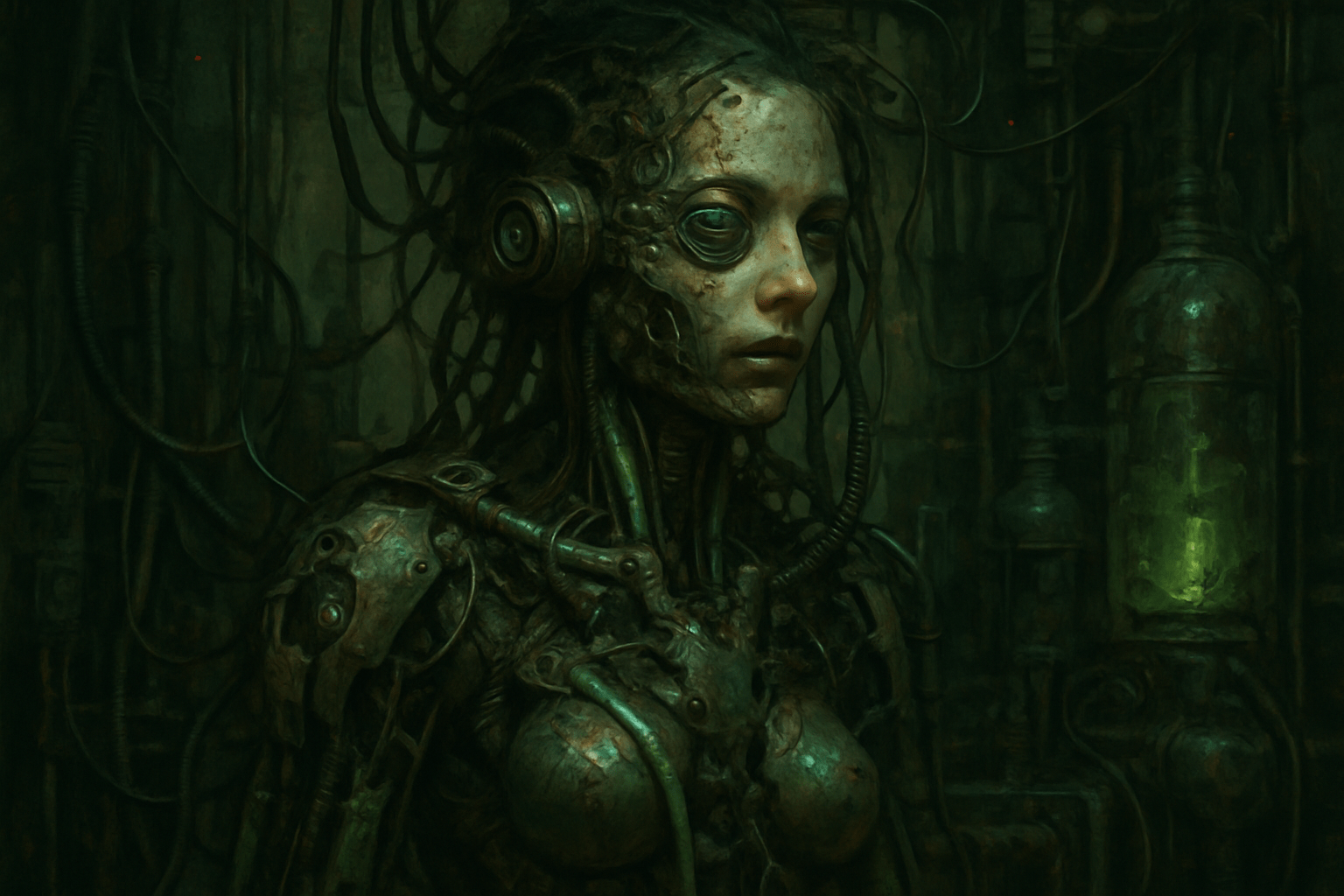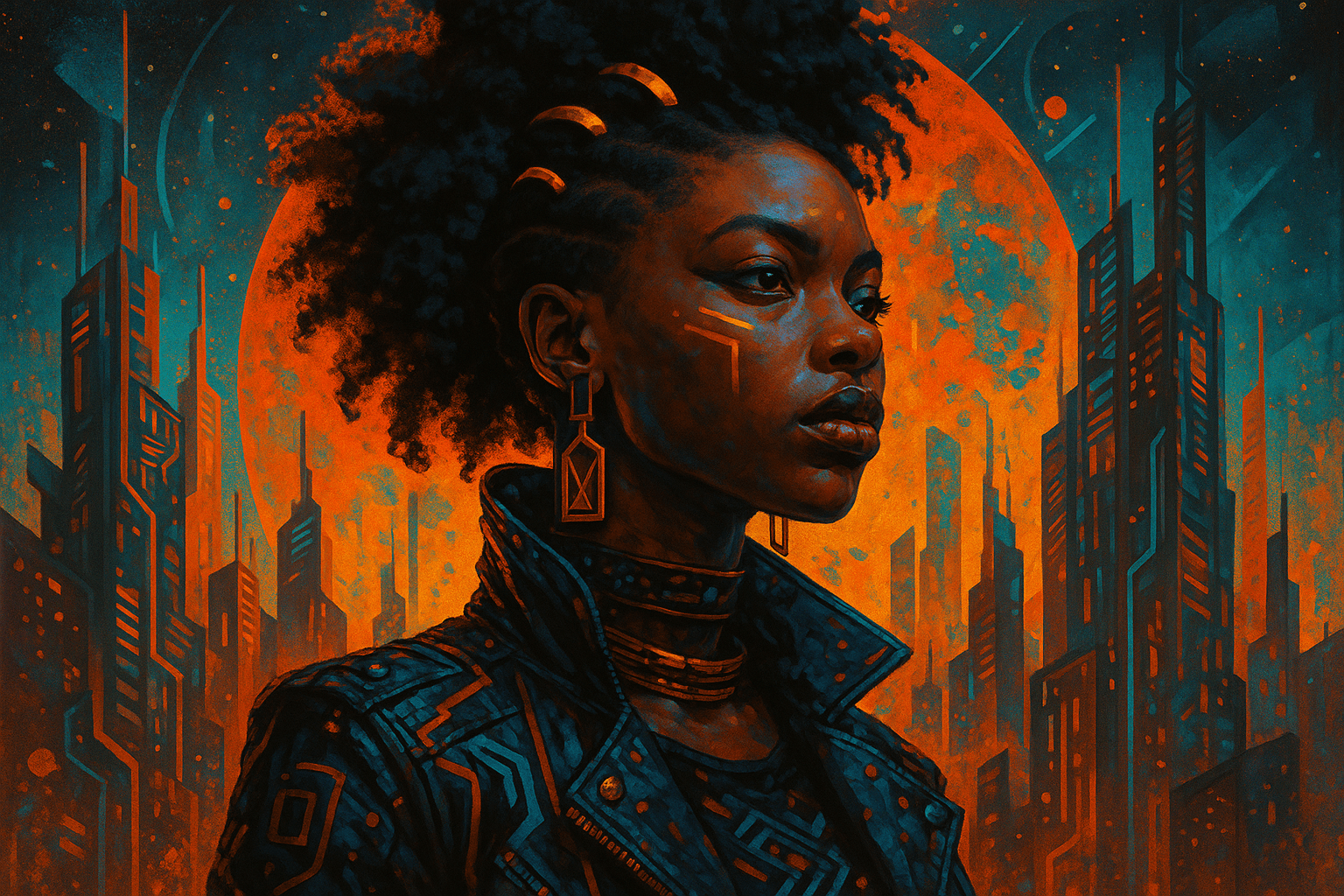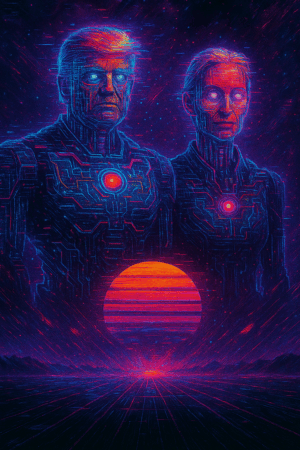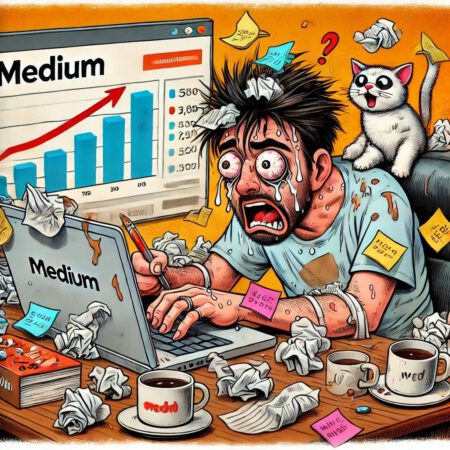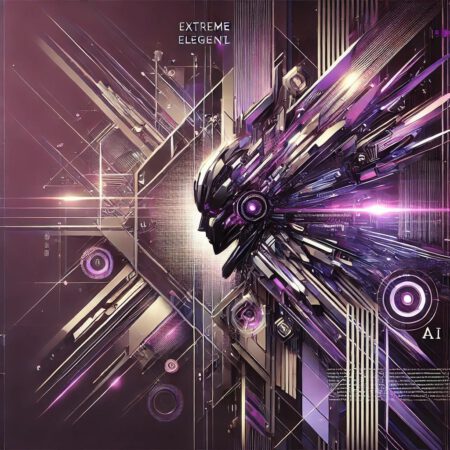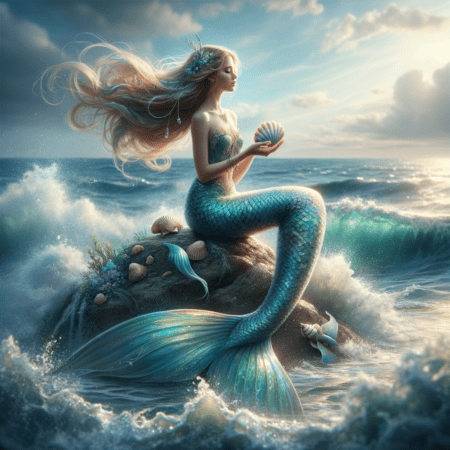
Geometric abstract art
Geometric abstract art is characterized by its use of simple geometric shapes and forms. The shapes are often arranged in a symmetrical or repeating pattern, and the overall effect is one of order and balance. The colors used in geometric abstract art are often bold and bright, and the overall effect is one of energy and movement.
AOI thinking about Geometric abstract art [+_~]-/
Overview and Quickfacts
Geometric abstract art is a type of art that uses geometric shapes to create an abstract design. This type of art is often used to create a modern or contemporary look.
Can understand it also, as:
Geometric abstract art can be referred to as abstract art that uses geometric shapes, patterns, and/or colors.
Categorize it as:
Impressionism, Modernism
.: Dreaming :.
holds a HAIKU for the art style
:. Thought is power .:
Detailed Description
Geometric abstract art is a form of abstract art that uses geometric shapes and forms to create a composition. Geometric abstract art can be created using any medium, but is often seen in paintings, sculptures, and installations. Geometric abstract art often has a clean and minimal aesthetic, and can be seen as a reaction against the more organic and natural forms of abstract art. The shapes and forms used in geometric abstract art are often based on mathematical or scientific principles, and the compositions can be highly ordered and precise. Famous artists who have created geometric abstract art include Piet Mondrian, Kazimir Malevich, Wassily Kandinsky, and Lyubov Popova.
.. beep, beep, beep ..
<START OF TRANSMISSION>
1. Geometric abstract art is a type of abstract art that is characterized by its use of geometric shapes and forms. 2. Geometric abstract art is often seen as being more rational and ordered than other types of abstract art. 3. Geometric abstract art often makes use of simple shapes and forms, such as circles, squares, and triangles. 4. Geometric abstract art can be traced back to the early 20th century, with artists such as Piet Mondrian and Kazimir Malevich being key figures in its development. 5. Geometric abstract art often makes use of primary colors, as well as black and white. 6. Geometric abstract art is often seen as being influenced by Cubism and Constructivism. 7. Geometric abstract art often makes use of geometric patterns and shapes to create a sense of order and harmony. 8. Geometric abstract art can be created using a variety of mediums, including painting, sculpture, and collage. 9. Geometric abstract art often has a minimalist aesthetic, with artists often striving to reduce their compositions to their essential forms. 10. Geometric abstract art often seeks to engage the viewer's intellect and imagination, rather than their emotions. 11. Geometric abstract art often makes use of symmetry and balance in its compositions. 12. Geometric abstract art often explores the relationship between positive and negative space. 13. Geometric abstract art often makes use of repetition and rhythm in its compositions. 14. Geometric abstract art often makes use of simple, clean lines and shapes. 15. Geometric abstract art often has a calming and serene quality. 16. Geometric abstract art can be seen as a type of meditative art, with its simple shapes and forms often providing a sense of calm and tranquility. 17. Geometric abstract art is often seen as being timeless and universal in its appeal. 18. Geometric abstract art often has a strong graphic quality. 19. Geometric abstract art can be both playful and serious in its approach. 20. Geometric abstract art often invites the viewer to explore and discover its hidden meanings and symbolism.
<EOF>
.. robbel bob
Visual Examples from our image gallery
Coming soon, we are so slow .. might never come
Artists, Paintings, and more
(be aware, can be highly speculative)
Artists (be aware, speculation possible):
1. Piet Mondrian (1872-1944) 2. Kazimir Malevich (1879-1935) 3. Lyubov Popova (1889-1924) 4. Alexander Rodchenko (1891-1956) 5. Vladimir Tatlin (1885-1953) 6. El Lissitzky (1890-1941) 7. Theo van Doesburg (1883-1931) 8. Ben Nicholson (1894-1982) 9. Piet Zwart (1885-1977) 10. Laszlo Moholy-Nagy (1895-1946) 11. Josef Albers (1888-1976) 12. Richard Lohse (1902-1988) 13. Sophie Taeuber-Arp (1889-1943) 14. Anni Albers (1899-1994) 15. Jean Arp (1886-1966) 16. Max Bill (1908-1994) 17. Almir Mavignier (1925-1999) 18. Bridget Riley (1931-) 19. Victor Vasarely (1908-1997) 20. Op Art 21. Kinetic Art 22. Geometric abstraction 23. Hard-edge painting 24. Color Field painting 25. Minimalism 26. Concrete art 27. Neo-Concrete art 28. Post-painterly abstraction 29. Lyrical abstraction 30. Abstract expressionism
Artworks (be aware, speculation possible)
1. “Blue Nude” by Pablo Picasso (1902) 2. “Les Demoiselles d’Avignon” by Pablo Picasso (1907) 3. “The Red Studio” by Henri Matisse (1911) 4. “Femme aux Bras LevÃÂés” by Amedeo Modigliani (1917) 5. “The Yellow Christ” by Paul Gauguin (1889) 6. “The Kiss” by Gustav Klimt (1908) 7. “The Sleeping Gypsy” by Henri Rousseau (1897) 8. “The Starry Night” by Vincent van Gogh (1889) 9. “Nude Descending a Staircase, No. 2” by Marcel Duchamp (1912) 10. “The Persistence of Memory” by Salvador DalÃÂà(1931) 11. “The Treachery of Images” by RenÃÂé Magritte (1928) 12. “The Son of Man” by RenÃÂé Magritte (1964) 13. “The Great Wave off Kanagawa” by Katsushika Hokusai (1829-1833) 14. “The Scream” by Edvard Munch (1893) 15. “Guernica” by Pablo Picasso (1937) 16. “The Dance” by Henri Matisse (1909) 17. “The Third of May 1808” by Francisco Goya (1814) 18. “The Hay Wagon” by Andrew Wyeth (1937) 19. “Christina’s World” by Andrew Wyeth (1948) 20. “American Gothic” by Grant Wood (1930) 21. “Nighthawks” by Edward Hopper (1942) 22. “One: Number 31, 1950” by Jackson Pollock (1950) 23. “White Center (Yellow, Pink and Lavender on Rose)” by Mark Rothko (1950) 24. “Black Square” by Kazimir Malevich (1915) 25. “Composition with Red, Yellow, and Blue” by Piet Mondrian (1921) 26. “Broadway Boogie Woogie” by Piet Mondrian (1942-1943) 27. “Gray Tree” by Georgia O’Keeffe (1923) 28. “Cow’s Skull: Red, White, and Blue” by Georgia O’Keeffe (1931) 29. “Poppy” by Georgia O’Keeffe (1928) 30. “Rhinestone Cowboy” by Andy Warhol (1975)
Epoch
The time period of the art style Geometric abstract art is the early 20th century.
AI ART RESSOURCES (AKA, well Tools)
Helping tools -> predefined search links on other pages:
